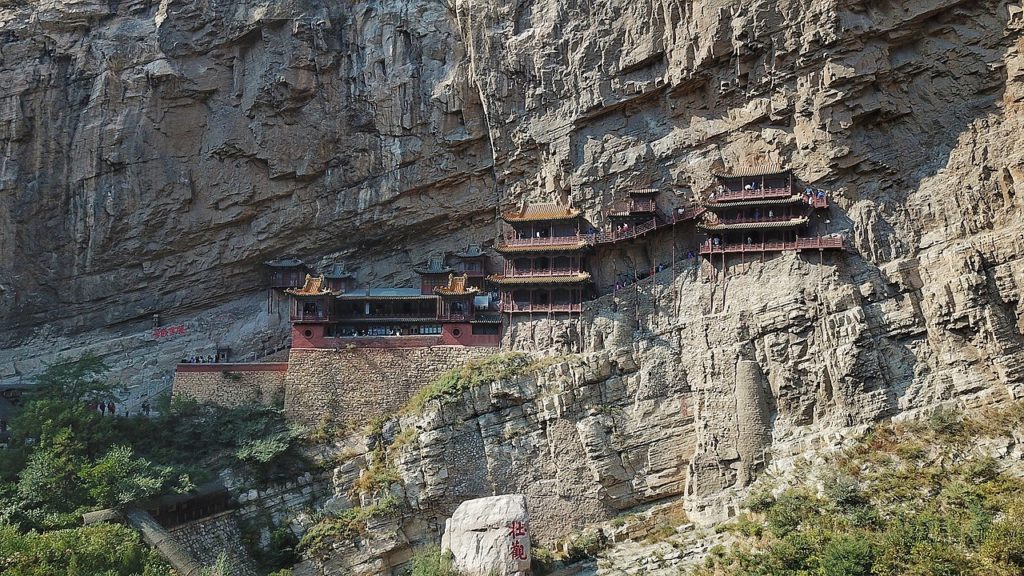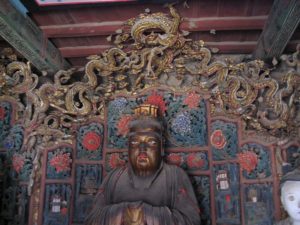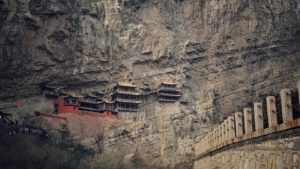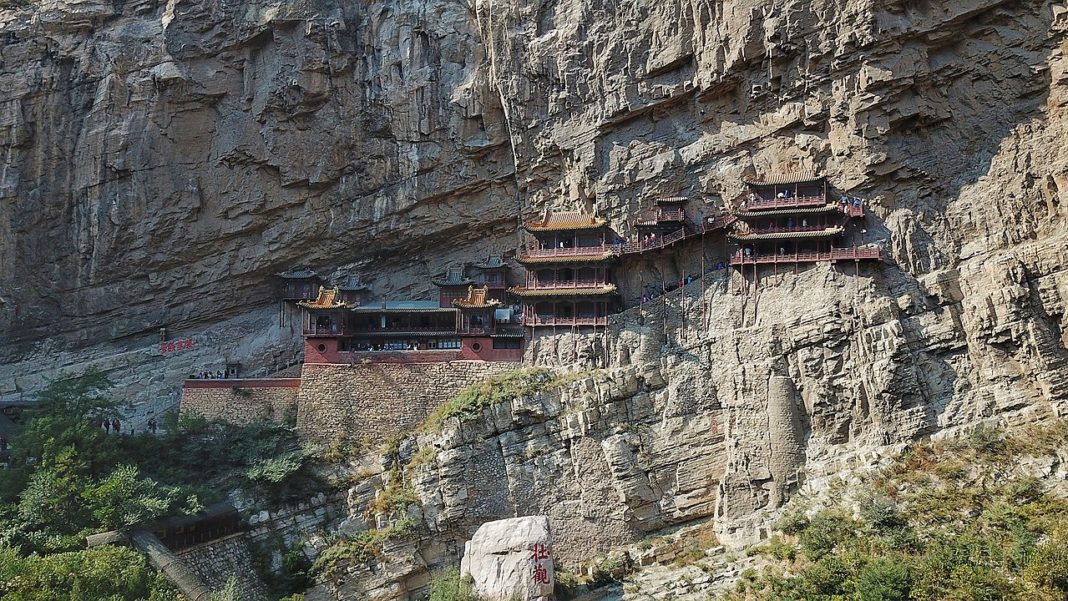The Hanging Temple, also Hengshan Hanging Temple, Hanging Monastery, or Xuankong Temple is a temple built into a cliff (75 m above the ground) near Mount Heng in Hunyuan County, Datong City, Shanxi Province, China. The closest city is Datong, 64 kilometers to the northwest.
Why build a monastery like this? Location is the first reason; building a monastery on the cliff could shield it from floods. In addition, the mountain peak protects it from rain and snow; and the mountain around it also diminishes damage from long-time sunshine. The second reason is that the builders followed a principle in Taoism: no noises, including those from rooster crowing and dog baying; so from the upper ground, all noises drop away.

Along with the Yungang Grottoes, the Hanging Temple is one of the main tourist attractions and historical sites in the Datong area. Built more than 1,500 years ago, this temple is notable not only for its location on a sheer precipice but also because it is the only existing temple with a combination of three Chinese traditional philosophies: Buddhism, Taoism, and Confucianism. The structure is kept in place with oak crossbeams fitted into holes chiseled into the cliffs. The main supportive structure is hidden inside the bedrock. The monastery is located in the small canyon basin, and the body of the building hangs from the middle of the cliff under the prominent summit, protecting the temple from rain erosion and sunlight.

The Hanging Monastery consists of two pavilions, a bridge, and 40 halls. It’s 32 meters long in total.
The entire 40 halls and pavilions are all built on cliffs that are over 30 meters from the ground. The distance from north to south is longer than from east to west and it becomes higher and higher from the gate in the south to north along the mountain. With a brief layout, it includes the Qielan Hall (Hall of Sangharama), Sanguan Hall, Chunyang Hall, Hall of Sakyamuni, Hall of Three Religions, and Guanyin Hall. The Long Bridge, connecting the two pavilions, is about 10 meters long. There is a pavilion above the bridge with a hall for worshiping statues.

Hanging Monastery is an architectural wonder. A unique mechanical theory was applied to build the framework. Different from the monasteries in plain and mountain areas, the monastery ingeniously took advantage of the original shape of the cliff, using the rocks in the back as its support. Hanging Monastery attracts tourists from all over the world because of its unique architectural style, which shows the incredible wisdom of ancient Chinese people. In October of 2010, it was selected as one of the “ten most precipitous structures in the world” by TIME, together with the Leaning Tower in Italy and other well-known ones.

According to Wikipedia















